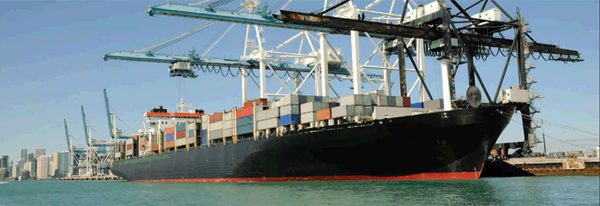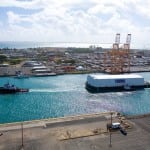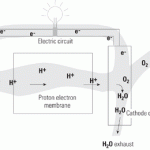
Source: EPA
It’s a solution that POWER’s legendary troubleshooter Marmaduke Surfaceblow, the six-foot-four marine engineer with a steel brush mustache and a foghorn voice, might have appreciated.
Regulators across the country have begun to recognize that a significant source of pollution in major coastal cities arrives from over the horizon. Along with shipping containers, bulk cargo, and cruise ship passengers, major oceangoing vessels bring substantial amounts of diesel exhaust to port areas while tied up to the piers. This is because the vast majority of them continue to run their engines to provide auxiliary power in port.
How significant? Emissions from auxiliary power generation is thought to make up one-third to one-half of the total in-port emissions attributed to oceangoing vessels. According to a 2004 study, average daily emissions for a busy port like Los Angles can be more than the total emissions from a half-million passenger cars.
One might ask why these ships can’t plug into shore-based power. In fact, the U.S. Navy has relied on “shore power” for decades, a practice also referred to as “cold-ironing,” in which a vessel at berth lets its engines go cold and connects to a source of electricity on the shore.
The answer is infrastructure. Most ports simply don’t have the necessary hook-ups in place, and retrofitting them to meet the power needs of all the docked ships at a major port is both complex and costly. Adding a shore power connection can cost around $5 million to $10 million—or more—per berth. And with few ports having shore power connections, ship owners see little justification in retrofitting their vessels with the necessary equipment, which can cost around $500,000 for each ship.
In 2007, the California Air Resources Board issued a regulation requiring container ships, refrigerated cargo ships, and cruise ships to either connect to shore power while at berth or use alternative emissions control strategies. The requirement takes effect Jan. 1, 2014, and ports in California are working to install the necessary infrastructure. For example, the Port of Oakland is installing connections at 11 berths on six terminals, at an estimated cost of $70 million.
But some have noted that switching to grid-based power doesn’t eliminate emissions. Instead, it shifts the emissions to the source of electricity. Depending on the electricity source, the overall reduction in emissions can be relatively small.
Now, a new study by the Sandia National Laboratory suggests that an alternate approach could provide a more flexible, cost-effective solution while completely eliminating associated emissions. It would involve mounting a hydrogen fuel cell on a barge that could act as a mobile source of shore power.
The Potential for Fuel Cell Barges at Western U.S. Ports
The Sandia study was conducted for the Department of Energy’s Office of Energy Efficiency and Renewable Energy (EERE). The authors evaluated a simple fuel cell strategy that consists of mounting a hydrogen-fueled proton exchange membrane (PEM) fuel cell on a floating barge, using existing off-the-shelf technology. All the equipment and fuel would be housed inside standard shipping containers for ease of handling.
The authors calculated that a single 40-foot shipping container could hold a fuel cell system with around 800 kW capacity. The same container would also hold 650 kg of pressurized hydrogen gas or 2,500 kg in liquid form. A system consisting of two fuel cells and two containers for hydrogen storage, an arrangement that would easily fit on a standard barge, would be able to supply about 65 MWh (gas) or 250 MWh (liquid) of total generation. This could meet the power needs of a standard container ship while in port, though additional capacity would be needed if the ship carried refrigerated containers. The modular design would allow capacity to be scaled up or down as needed.
To evaluate the feasibility of the idea and analyze potential deployment options, Sandia researchers visited ports up and down the West Coast and in Hawaii. They gathered data from two U.S. Department of Transportation Maritime Administration facilities and the ports of Long Beach, Los Angeles, Oakland, Portland, Honolulu, Seattle, and Tacoma.
The authors compared the cost of fuels for auxiliary power with hydrogen for fuel cell use, as well as with the cost of shore power. At current prices (about $4/kg), hydrogen with a fuel cell is cost-competitive with maritime fuels using a diesel engine, in part because ships are required to use more expensive low-sulfur fuel oil when in or near port. While hydrogen is still more expensive, the greater efficiency of the fuel cell over a diesel engine makes hydrogen more economic. Assuming hydrogen could be reliably sourced at stable prices, the cost of electricity from the fuel cells (about $0.19/kWh) would be only marginally more expensive than shore power (about $0.14/kWh for the Port of Los Angeles).
When shipboard generators are frequently producing less-than-maximum power, the efficiency advantage of fuel cells compared to diesel engines is widened. Even hydrogen at $5/kg could potentially save tens of thousands of dollars per year.
Potential Deployment Options
Based on the data, the authors concluded that the ideal application would be for container ships carrying a limited number of refrigerated containers, because they typically visit the same ports multiple times during the year and thus would see a rapid return on investment in retrofitting shore power connections for their ships. Cruise ships and refrigerated cargo ships also tend to have regular schedules, but their power requirements are too high for a reasonably sized fuel cell barge to meet.
For the ports, the hydrogen fuel cell barge approach would remove the need for adding electrical infrastructure. The barge would also have the capability to move from berth to berth as needed, as well as to anchorage points to power vessels that are waiting for berths—something short power hookups cannot do.
While the authors suspect it may be too late to roll this idea out on a large scale in California, since its ports are already installing the infrastructure for cold-ironing, they found potential applications elsewhere. At ports in Oregon and Washington, grid-based cold ironing infrastructure is limited or nonexistent. Using a hydrogen fuel cell to power container ships at berth has attracted interest for its potential economic and environmental benefits, they said.
The applications for Honolulu Harbor in Hawaii were a bit different. A substantial amount the cargo is unloaded there and then reloaded onto barges for distribution to the other islands. These barges use containerized diesel generators to provide power to shipping containers that require refrigeration. Thus, employing fuel cells would involve merely swapping out the diesel engine containers.
While ports in Hawaii aren’t governed by the same emissions regulations as those in California, the potential savings in fuel cost is attractive for the company operating the inter-island transportation service, along with anyone else suffering from high fuel expenses, the authors said.
—Thomas W. Overton, JD is POWER’s gas technology editor.










